The Defence Committee of the House of Commons recently discussed the complex aspects of the UK’s approach towards unmanned aerial systems.
Air Chief Marshal Sir Richard Knighton outlined the classification of drone technologies into three tiers, underscoring the prioritisation of Tier 1 drones for their cost-effectiveness and expendable nature. He highlighted the operational focus on these small, inexpensive platforms to augment the combat air fleet’s survivability and lethality.
Knighton noted the lessons being incorporated into UK defence strategies, especially the employment of Tier 1 drones for electronic warfare to neutralise enemy air defences.
Air Chief Marshal Sir Richard Knighton:
“I will answer on Mosquito first. That was a really good example of investment in innovation and learning, which was extracted from it at the point where we decided that we would not continue with the programme, because we had learned as much as we needed to and needed to think about how we pivoted to the next phase of our development.
In terms of our thinking around the strategy for uncrewed systems and what we call autonomous collaborative platforms, we think of them in the context of cost versus capability. We broadly put them into three brackets. Tier 1 is small, much cheaper, so probably several orders of magnitude cheaper than a crewed platform capability—we are talking hundreds of thousands of pounds; we judge those to be completely disposable and we would not expect them to come back from a mission.
Tier 2 is described as attritable, so we would expect them to come back sometimes. We could tolerate losses, but clearly, as it gets more expensive, the economics of that model shift. Then, tier 3 is for platforms that we would expect to be completely survivable and we would want them to come back all at the same time. That is similar-ish to some of the work that was done under a programme called Taranis some 15-plus years ago.
Our analysis shows, in terms of the cost-benefit between what operational benefit you get and the cost of those platforms, that our first focus should be on those tier 1 platforms. Quite a lot of the work we have been doing over the last few years has led us to that conclusion and some of that technology. I anticipate having a usable operational capability within a year that can work alongside our current combat air fleet and improve their survivability, certainly, and potentially their lethality.
In the circumstances, what I think we will see first will be smaller drones that include electronic warfare packages that enable us to suppress enemy air defences and allow our Typhoons, for example, to get through a threat or get closer to a target. We are learning a lot from the experience we are seeing Ukraine and Russia have in the war in Ukraine and trying to take that knowledge, expertise, the advice we are providing and the information and intelligence we are gathering and applying that in that way.
In the first instance, it will be those tier 1 capabilities. As we develop our understanding of the operational concepts—how we would employ them and what those platforms might do—that will teach us more about where the price point is that makes sense.
To give you some examples, the Americans have just announced five contracts for what they call collaborative combat air, which is similar to our autonomous collaborative platforms, where they are putting aside $5.8 billion across five platforms over the next few years to evolve that thinking. We will see where their analysis takes them and our analysis takes us in terms of where we go next. Right now, however, small drones—and as I say, within a year I expect to see us being able to employ them operationally.
There are a number of other issues I could talk about in terms of certification, but hopefully that gives you an indication.”


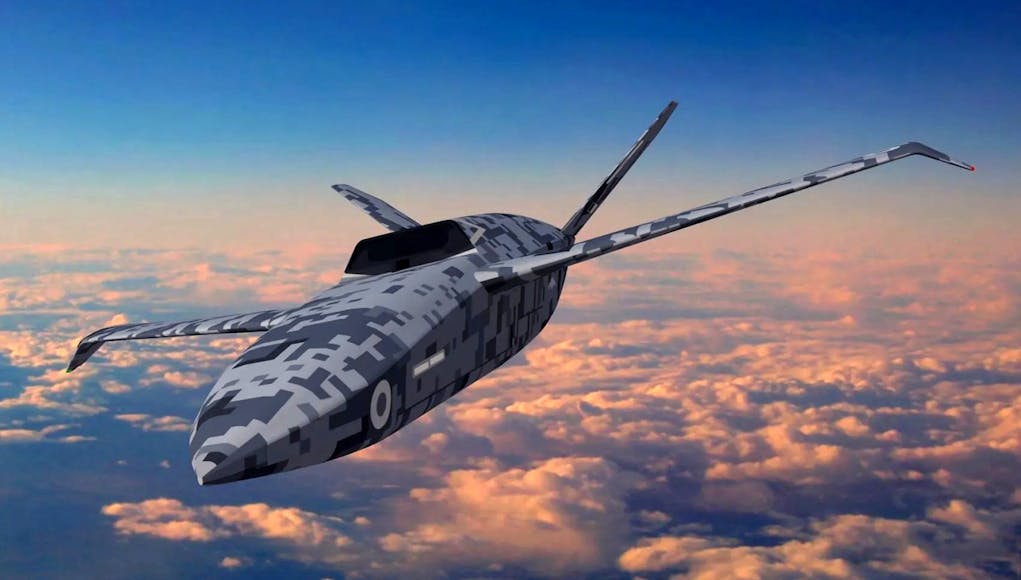

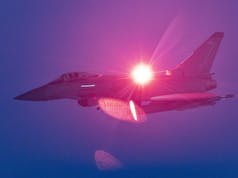
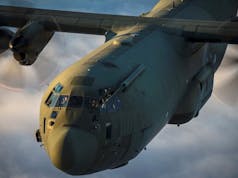
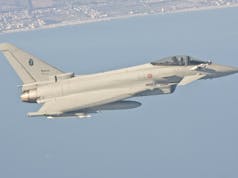
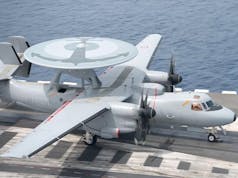
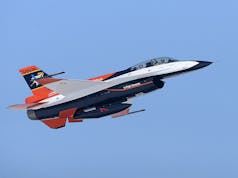
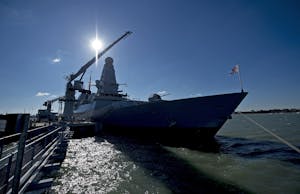









So, would Qinetiq’s Vampire be Tier 1 or 2? I know they have projects to use it for ISTAR etc, and a variant was found in Ukraine. Qinetiq say it’s disposable but Banshee isn’t that cheap a bit of kit.
We should have kept on with Taranis and go it into service, imagine a stealthy unmanned long range bomber. It would have been a massive export success because only the US has something similar and they don’t even acknowledge its existence much less sell it.
Middle Eastern air forces that can’t buy F35 and are short on manpower would have snapped it up.
It would have been a massive boon for Ukraine as well.
Taranis was just a R&D programme, it was rather too small and limited in range to be a “Long Range Bomber”…. It used an Adour Engine (like Hawks) and can in no way be considered a possible “Massive Export” prospect.
Too small to be a long range bomber in the sense of the B1, B2 or B21, but definitely a long-range strike, unmanned stealth strike aircraft that could provide an ample replacement for Tornado GR4.
Even if not an export prospect, even just having 30-40 Taranis UCAVs would provide a significant boost to our strike capabilities.
Not only that but a few EW variants equipped with decoy launchers, would increase the chance of getting through. Am I correct in saying Taranis was part of the loyal wingman R&D too.
It’s the future, for sure. Just waiting for a good AI to fly the thing and some longer range F35A/C upgraded purchases to bulk out the accompanying sensors.
Not only that but a few EW
A Predator looking jet, like an armed Global hawk with Spear, would be great for middle east ops and the Pacific.
Of courses Taranis is the ideal aesthetically and would compete with optionally manned B21
The B21 weighs 31,000KGs empty, Taranis is/was tiny and @ 4000 Kg’s empty…. It’s like comparing a Hawk with a Vulcan.
It’s could carry 2 Paveway IV or 4 SPEAR. Even that’s a useful load out but obviously I would be looking at a production version being a bit larger.
Engine thrust is largely irrelevant on a stealthy platform but again plenty of larger OTC engines available.
Nah mate…. It was never going to be a Bomber, just a design test.
The US did serious predictions nearly a decade ago on the survivability of such a platform considering advances in air defence as then feasible and decided it simply was at that time too problematical to commit to putting such a platform into production. It’s complex and very costly you have to be very clear minded and sure even now to commit to it and understand the environment it will operate in. I think the idea is now becoming more fashionable both because extra years defining its use case, technological advancement and arguably the greatest of all deep concerns about the… Read more »
I meant a taranis-looking thing. Wouldn’t be hard to make an unmanned competitor to B21 that the Saudis would be all over
I agree if Airfix were involved 😂 but Taranis was never going to be a Bomber conceptual design…..I do like your train of thought though…..😃
Take your point though aerodynamic design may be a little changed since Taranis was conceived but I presume you are just really referring to a drone bomber concept somewhat like the B-21 esp the removal of a vertical tail for added stealth. But is that the best way to go? Would long range weapons be a better bet for a Country like us no doubt in cooperation with others. B21s to be effective will need a massive support infrastructure at various levels beyond the immensely expensive plane itself and will then have to use stand off weapons in most scenarios… Read more »
I am wondering about the economic rational of each plateform. If a plateform can be engaged by a mistal, that cost 200 K€, it must be 20K€. If a plateform can be engaged by an Aster, it must cost less than a million… is this the right reasoning for each tier, or is it different. Another exemple regarding Predator: if the predator plus it’s munition can be engaged by a missile 20 times cheaper, than itself, or itself plus the missile it carries, then it doesn’t work. It need to be protected either by stealth or by shooting from a… Read more »
The defensive missile nearly always costs as much as the offensive one, and is more often doing so. The rationale is that the cost is weighted against the loss of the ship. Like with Aster Vs Shahed at the moment. Aster costs a whole lot more than the drone but a whole lot less than the loss of a container vessel or, god forbid, the T45
Sorry. but that is fanciful Taranis was a systems development programme of the type the US have been doing for 20 years. I note that the US over this period despite award winning autonomous systems by Northrop Grumman and very stealthy designs, before and during Taranis testing programme decided not to go ahead with attack drones of that nature at that time. Thus the Boeing tanker drone was born instead. Only now are they contemplating such attack drone concepts to end up with actual production contracts. Things have and are changing a lot since Taranis was flown esp in terms… Read more »
Personally i’d say Tier 2 but only due to there being many really small and cheap options as we see in Ukraine… but I guess we are talking about Drones that are way up the Ladder in weight and capability.
Yes, compared with hand launched quad copter it’s not really in the same league with 400kt, 2hr endurance and proper payload options. Apparently a Vampire was found in Ukraine by the Russians that had a warhead on it.
that’s nothing… a Bloke in Plymouth found a 500kg bomb in his garden !!!!😄
Some of these “unexploded bombs” are nothing of the sort (clearly not the case here)
Remember that one that was just a giant marrow?
And there was a beach closed down and the article I saw had a picture of the “bomb” on the front, that was apparently “inspected and carefully removed” by disposal.
It was very clearly just a paravane, of the kind used for minesweeping. Sort of thing someone who knows nothing about bombs would ring the police for but genuine disposal teams ought to have known straight away
Now that was stealthy, 70 years of stealth indeed.
Aren’t we talking about US Vampire drones here, not the UK planned platform?
No, I was referring to the Qinetiq/NavyX project.
I don’t think Vampire is a QinetiQ project per se. I think it’s a NavyX project which is trialling a QinetiQ platform (Banshee Jet 80+). It most definitely isn’t Tier 1 per se, and would best be described as attritable. I think it would depend on what it’s carrying as it can be fitted out as a target drone, or as ISR. We don’t know for sure that the Navy will have the same tiered view of drones that the RAF do. According to Navy Command, Phase 1 of Project Vampire is intended to last up to four years. Key… Read more »
I think you’re right per se, but it would help per se to have cooperation between the forces.
Not that you are taking the Mickey, per se, nor that I was drunk per se when I posted last, merely ever so slightly tipsy…. 😀
Drone Wars! Royal Marines, Japan acquires T-150 UAVs from Malloy Aeronautics23 February 2024 “The T-150 unmanned aerial vehicle (UAV) manufactured by UK-based company Malloy Aeronautics has been acquired by the Royal Marines and Japan, UK’s Minister for Defence Procurement James Cartlidge announced to Janes and other media representatives on 22 February. Speaking at the Defence Drone Strategy launch at Malloy Aeronautics factory, Cartlidge said that 22 T-150 quadcopters have been acquired by the Royal Marines and two by Japan for experimentation. Cartlidge told Janes that the Royal Marines acquired the platforms under a direct acquisition. Malloy Aeronautics’ UAVs have participated… Read more »
I wonder where we are with our design for drones onboard the carriers. Should we increase the proposed launch weight to include manned aircraft too? 22 February 2024HII shipyard starts testing aircraft carrier John F Kennedy EMALS with dead-load launches “HII’s Newport News Shipbuilding (NNS) unit has started testing of the Electromagnetic Aircraft Launch System (EMALS) on aircraft carrier John F Kennedy (CVN 79), marking a major milestone for the ship, HII confirmed on 21 February. After testing catapults one and two – the bow cats – with no-load launch movements, NNS workers and Kennedy sailors started the dead-load testing,… Read more »
Morning Nigel, yes it’s all gone a bit quite regarding the EMALS for the Carrier/s…. I still wouldn’t rule out other possible platforms able to carry and launch Drones ……..T32 ? It is described as a platform for Autonomous Vehicles (not just MCM ) and you might recall WW1 and WW2 ships launching Walrus and Hurricanes to name just two…..
Odd, given its apparently urgent timeframe, that nothing has been published about the results of that RFI. Also curious that the launch and recovery maximum weights specified would have been enough to handle an F18 or Rafale but not quite an F35.
I suspect that the likely cost of such a system has ruled it out and that a General Atomics STOL platform will be chosen. With Crowsnest given an out of service date of 2029, there isn’t much time to choose and build its successor.
It was ruled out many years ago as the Primary system for the Carriers….. The later proposal is for a much reduced loading capability and certainly not for fully laden Strike aircraft.
The RFI set out launch and recovery weights large enough to handle an F18 or Rafale. 55000 lbs t/of and 47000 lbs recovery. Rafale M has max t/ off weight of 54000 lbs. The F18 was similar though the later Superhornet has a t/ off weight of @66000 lbs. Certainly the specs would have allowed the use of quite a heavy platform, manned or unmanned. I doubt it matters because the RFI also wanted something capable of installation by 2023. I assume that costs were too high to proceed and the RN has moved on to other priorities. We haven’t… Read more »
I think we must be talking about different projects.
And what will replace Crowsnest? or we just have a gap like we always do to save some money? E2 Hawkeye would be ideal but we will never get and cobble some half arsed thing together with cost loads but is not very good.
To be replaced by that widely deployed system of ours called Capability Gap mk1.
A very common misconception, it’s not a capability gap at all, it’s a strategic rest…
” He isn’t, dead he’s only resting” 😂
The new Parrotsnest system!
😂😂🤣🤣
Beautiful plumage….
Surely up to mk5 now isn’t it.
Proteus is already scheduled to replace CROWSNEST
What is Proteus? a guy in hot air balloon with binos?
Not far off, it is a lot of hot air
Proteus is the Navy’s project for a UAV helicopter with a tonne payload (bit smaller than Wildcat) for ASW, vertrep and maybe AEW. We will probably want fixed-wing for that, though
Proteus? Do you have any links for that, Jim? I know Leonardo include AEW in their list of possible capabilities, but has the Navy commented?
It offers nothing substantial over Merlin / crowsnest though. Same rotary limitations of altitude and endurance. It has to be fixed wing with long endurance, so a Mojave type capability. We need a robust STOL UAV with excellent gust response and strong gear, that can be launched and recovered easily from a pitching deck, maintaining lazy figure of eights at 20,000 plus for 10 hours plus and carry a heavy load, so a capable radar / sensor system, at least as capable as Crowsnest, but preferably more capable. Also carrying a long range distributed optical system, capable of long range… Read more »
What indeed? Looking at the protracted development history of Crowsnest, we ought to have started work on its successor already to meet an end of 2029 in service date.
Does someone have a cunning plan?
yes the plan have a gap, go with out as normal then rush to buy a very expensive replacement that should of been got years ago
I quite like something like this which I posted a while back seems to be a great compromise between Helicopter and fixed wing, but still far from a finished product that could offer a potential crowsnest replacement but has the potential to operate from a Frigate as well as the carriers methinks.
https://
newatlas.com/drones/pterodynamics-transwing-navy/
E2 C Hawkeye would be the best but we can not afford it or use it from our show piece carriers
A video worth watching.
F/A-18 SuperHornet Ski-jump Carrier tests from INS Hansa, Goa
https://
youtube.com/watch?v=nJN9deZYnmI
I wonder if the current launch weights accompanied by the added lift from the ski ramp would make a difference.
F/A-18 SuperHornet Ski-jump Carrier tests from INS Hansa, Goa
https://
youtube.com/watch?v=nJN9deZYnmI
Practically all CATOBAR capable aircraft are capable of operating in STOBAR configuration. I understand both SH & Rafael-M have been tested off ski ramps. Biggest problem has been reduced max takeoff weight. It’s why I have repeatedly suggested that recovery systems should be fitted. They are reasonably inexpensive (multiple land based bases have them, not just carriers). Considering UK has two carriers, but France, only one, to me it’s a no brainer. Whenever France’s carrier is in maintenance, UK gets access to a good number of free carrier capable aircraft (complete with maintainers). Load the F35B up for strike &… Read more »
Increasing the load capability to include manned fighters would increase costs, slow the implementation, and require the MOD to start pondering on whether we should have any new types, leading to yet more delays. The operational costs of any manned CATOBAR capability would also slow down implementation due to the change in the way the carriers would seek top work. There are three options on the table. 1/ catapults plus drones 2/ more V/STOL drones 3/ do nothing Neither of the first two options are no brainers, needing development time, risk and money. Adding more options will inevitably lead to… Read more »
Hello Jon, I never believed in placing all your eggs in one basket so to speak, so the question is, do we make the same mistake twice?
This presents us with the opportunity to launch a variety of aircraft from the carriers rather than just one type, namely the F-35B.
We could learn a great deal from the US who I’m sure would be more than willing to help us as they would also benefit from it.
The USN already have catapults and the USMC gave up on organic MUX because they’d overloaded the requirements to the point nothing could fulfil them. So forgive me if I can’t figure what you are suggesting we learn from the US.
What they learnt from installing EMALS on their carriers and the best way to proceed going forward.
With the ski ramp in place and the current launch weights, we might be fine with this.
F/A-18 SuperHornet Ski-jump Carrier tests from INS Hansa, Goa
https://
youtube.com/watch?v=nJN9deZYnmI
This is very promising. Good thinking and way to go
Fingers crossed and more than possible I would have thought. 🙏
F/A-18 SuperHornet Ski-jump Carrier tests from INS Hansa, Goa
https://
youtube.com/watch?v=nJN9deZYnmI
Did I read it here or elsewhere it’s these Malloy drones that are vital in supplying the Ukraine marines on their bridgehead across the Dnipro.
Hello Spyinthesky, I don’t recall seeing it here, but if that is the case, the perfect testing ground for real-life feedback on the system.
My little Potensic Atom SE cost £230, it has an HD camera and an endurance of @ 25 minutes the DJI Mavic 2 cost’s @£700 with similar spec, when you get to the Mavic 3, the spec gets you the extra feature of being able to carry a ligh weight Grenade (not as designed !) for less than £2000. personally I would group these as Tier 1 Drones.
My thoughts too, I hope we aren’t falling into the usual trap of gold plating things that don’t need gold plated! Scary to see them talking of costs of hundreds of thousands, tier 1 should fall into the hundreds of pounds level, not hundreds of thousands!
The problem is, they have to be capable of doing their job in a non permissive environment, without being stopped in their tracks by a simple jammer that even the lowest of the low terrorist group / state player, can easily procure in quantity.
That takes your high street drone firmly off the table.
You mean the way Russia are stopping them with ease now?
The Russians just don’t give a crap about the disposable meat wave peasant army Marked, so I wouldn’t use them as good example!
As warfare gets increasingly technology driven, you can guarantee even low level opponents will utilise all manner of GPS and signal jamming.
Because of EW. Thus frequency hopping. There are always counters.
Interestingly the Malloy drones were initially being affected by jamming in Ukraine, they changed some of the electronics to alleviate that and appear to be immune, at least for now.
I agree that the bottom end of Tier 1 could be what you say, but bear in mind he’s also talking about essentially EW decoys that can support Typhoon in Tier 1 – closer to Spear 3EW in concept- which I presume would be in the low hundred thousand pounds or so?
Hopefully he is talking mainly about airforce and not army capabilities which has a totally different requirement. Its all very well spending 100s millions on research but essentially you still need thousands of cheap magic 3 type drones all ready to go . I hope the money is just not used as a gravy train to line pockets of research drpts and company profits and not actually procure anything . Hopefully uk will make its own dji drones
I suppose logically, these small DJI type drones would only be used by Ground forces( as we’ve seen in the Armian/Azerbaijan war and in Ukraine)…… so i believe you are right, which would then lead us to think that Airforce requirements would have to be for the larger stuff hence the Tier 1 “hundreds of thousands of £’s” mentioned in the article….. Bayraktar type drones are @ 5 million $$’s a pop so we must be looking at something a lot smaller and way less complicated.
Interesting times ahead.
Yes its good that the uk now has an official Defence Drone Strategy with a seemingly allocated budget now , so all in all great news .and hopefully knock out our own bayraktar stuff on mass
Maybe look at Parrot, a French company. They do 7000 drone for the French Army till 2030 and the CEO said the company makes 7000… per week! For Ukraine… The design was ok, so the US army are buying them with US manufacturing behind. I have one, it is not expensive, pay load may be no bigger than a hand grenade. I think the small drones they are looking for may carry 10 kg of explosive to attack stronger targets. The GPS spoofing is not so relevant, since drone can take pictures from their environment and interpret them onboard for… Read more »
I am far from an expert here but from what I gather it seems on more sophisticated attack drones they are under direct control until acquiring a target and then using on board camera and sensors it can home in on the allocated target immune from present jamming techniques. This is certainly a measure and countermeasure drone conflict. Obviously it all adds to complexity and costs.
I don’t know why it would even take a year to get disposable drones. We are providing long range disposable drones for Ukraine, aren’t we?
Sadly we always need a “1982” moment before people, who should know better, get their arses in gear. I really think we need to go flat out on this concept on all Tiers. Funny but the people of rank talking about this are all older end and of rank. We need a military version of Dominic Cummings.
Tier 1, hundreds of thousands of pounds? What ukraine had shown is that there is a use for tens of thousands of drones costing mere hundreds of pounds. That should be tier 1. Dropping frag grenades on trenches, suicide drones chasing trucks behind the lines, that sort of thing that degrades front line trips morale and effectiveness. Or does that level fall outside of this framework to be covered elsewhere? I hope we aren’t falling into the usual trap of passing over cheap options for the sake of gold plated excessively costly options that only benefit industry share holders. Whilst… Read more »
Exactly…..
I don’t think the “gold plating” only benefits industry shareholders. That’s why it’s too easy to argue we must have such and such capability; this is the only project we have going so it must go here. Do that with a couple of bigwigs pet capablities and the project becomes unaffordable and ends up dropped.
NATO wouldn’t fight like Ukraine/Russia has. It would be a very different kind of conflict.
Even small than that, individual soldiers or squads having their own drones..the first thing in. The use of micro drones for situational awareness or indirect attack could be very significant at a squad level..clearing a room with a drone etc, knocking out key squad support weapons….the need for squad level protection against that…if someone can drop a drone on the head of your squad level support weapon and you can do nothing about it…..
This is the Air Force, remember.
The Ukrainian equivalent would probably be Baykratr for T2. The Army will have their own loitering munition programmes
Yes…..
I assume this RAF officer was talking about drones for the RAF.
Honestly. They’ve had years to fanny around and experiment and ” inform future decisions.” Just buy them. And buy plenty.
I’ve been resisting commenting on THAT, this winds me up too much.
Thank you PC.
Annoys me too. All I read from the extracted conversation above was another round of self indulgent, pointless and expensive ‘ pivots’, ‘understandings’, and whatever you’re having yourself. Meanwhile a kinetic war rages on our doorstep. There’s a plethora of drone types out there, it’s not rocket science, just buy them.
Yes indeed. Goodness me, we’re in a league of our own when it comes to contemplating new capabilities. I thought there was a MoD initiative a few years back to fast track new capabilities using Small Medium Enterprises and Academia rather than the large primes. Yet still we procrastinate. The military world is moving faster than we can insert the new capability in the quantities needed. mind you, we talk a good game….
Our first drone came into service in about 1970 – Canadair CL-89, known as Midge – for the RA – for Target Acquisition. So we have had over 50 years experience.
Huh, I’ve been thinking along these lines for a bit, don’t know if I should be relieved or worried that the MoD agrees with me.
How many drone programs do they need between the 3 services over the last decade or so to actually deliver something that is deployable?
It’s clear that cheap one way drones are now the current force multiplier of the current battlefield. Its time to mass order some.
Interesting, given evidence Ukraine has been retrofitting Banshee to be a DIY cruise missile, QinetiQ with the low cost KINDRED program (given reports it prototyped 3D printed drones in months) and other low cost activities.
Yes. QinetiQ might end up being the stars of UK drone production, because that’s where MOD put the money.
3D printing has to be the way ahead at least beyond the very simple drones because there will need to be rapid prototyping and updating of any design, no point knocking out thousands of rapidly obsolete drones kept in storage beyond a certain level for immediate use. But this poses the question if the 3D capabilities are being built to enable that rapid output. I doubt it.
According to the scant stories (which QinetiQ soon scrubbed references to) did just that- rapid prototyping of Shahed- like suicide drones and other designs. According to reports that was done in three weeks, and seeing in Ukraine almost real time development and deployment I’m certain QintetiQ have thought about the production cycle of an ‘on demand’ nature.
I actually think they have missed a very big segment here a lot of the drones being used in Ukraine are not close to tier one costing hundreds of thousands of pounds..
drone warfare is going to be on a far large number of tiers than this…micro drones costing a few hundreds of pounds for supporting individuals or squads, small drones supporting companies/battalions for a few thousand pounds….that’s before you get to the s-100 sized drones costing in the hundreds of thousands.
As was discovered with 155mm shells, modern warfare will find many uses for tier 1 drones, so we’ll need the industrial base to churn them out quickly and cheaply if they are to perform as desired.
Just interested in what you would classify as a Tier 1 drone ? …. It was described as costing Hundreds of Thousands of ££££’s in the article but no detail ……. Personally I’m thinking Something way bigger than a DJI but way smaller and less technical than a Bayraktar….. 🤔
This link is worth reading with hand-launched drones of a reasonable size.
https://
kyivpost.com/post/23241
Can’t see it mate.(the link that is) …. Hand Launched would be Ground Forces though and Short range ? Not sure how Hand Launched fits with RAF nor with the stated Tier 1 cost’s in the hundreds of Thousands……
Copy and paste both parts of the link and it takes you directly to the article.
I tend to just copy the second part go to a new tab and paste over the section beyond the https://. On tablets it’s very difficult to try to paste the whole thing and then try to remove the space if that’s your problem.
What we need is tier2/3 carrying bunch of tier1 to fly with manned the tier1’s can be launched as soon as threat level reaches engagement level the tier 2/3 rtb and the tier1 saturate air defence giving manned aircraft better survivability
The ACM came up with these 3 categories (Tiers) of UAS. Given that the cheapest is in the hundreds of thousands of pounds, he is clearly talking about UAS purely for the RAF. What happened to jointery? We need categorisations that span all three services and include the very cheap army-operated drones.
MOD’s Drone strategy document (issued last Thursday) does talk about cross domain in one respect – governance! We are establishing a Defence-level governance mechanism to support the pan-domain delivery plans of the Royal Navy, Army and Royal Air Force. We will focus across six Defence level areas to accelerate frontline capability and offer industry a clearer interface into the appropriate parts of Defence: Research & Development Operational, Equipment and Market Analysis Digital, integration and security standards Test & Evaluation coordination and exploitation Policy, Regulation and Risk Industrial Principles and Commercial Agility So no cross-domain definitions of type and, more disappointly… Read more »
Thanks Jon. Joined-up thinking and procurement is required, not RAF stove-piping.
Drones are more important that a lot of other military stuff nowadays. Drones are on the up, and will continue to evolve as long as there is a ‘conflict’ somewhere out there.
Drones are now big business, with all manner of commentators talking them ‘up’, in some cases for their own ends. It’s all about money, money, money, money… blah blah
Another excellent joint operation by the US and UK. I wonder if our F35s will be used to carry out actual missions in the area. “The US and Britain have struck more than a dozen Houthi targets in Yemen after a surge in attacks by the Iran-backed militia group on ships in the Red Sea and Gulf of Aden. It is the fourth joint action taken by the UK and the US in an attempt to deter attacks by the group on vessels, including a missile strike this week that set fire to a cargo ship. According to US officials,… Read more »
The US is much farther along in this area. Here’s an excellent account of where the US stands and is going.
Everything New We Just Learned About The Collaborative Combat Aircraft Program (twz.com)
I see the drone strategy had a paper come out on Thursday called;
Defence Drone Strategy The UK’s Approach to Defence Uncrewed Systems
I haven’t had chance to read it yet, but I’m hoping it will shine a light on the UK’s cross-domain drone strategy as opposed to just the RAF viewpoint.
So, 15+ years, millions of pounds spent, projects abandoned and we have managed to categorise drones into three families and know which is cheaper. Not bad for the MoD.
I realise this is an RAF statement, but containerised “Tier 1” drones could also be deployed from the mission bays on T26/31
I suspect the Tier 1 drones to be deployed within one year is Spear EW (EW variant of Spear 3) on Typhoon.
Spear 3 has already been test fired from Typhoon so integration and clearance should be easy
Spear 3 has already been ordered for F35, and some should be available for adaptation.
Spear 3 is probably in right price bracket (similar US MALD is US$ 30,000 to US$ 120,000)
is there any – serious – talk in any UK’s armed forces about ‘tier ZERO’, i.e. 300 quid fpv? Asking for a friend.